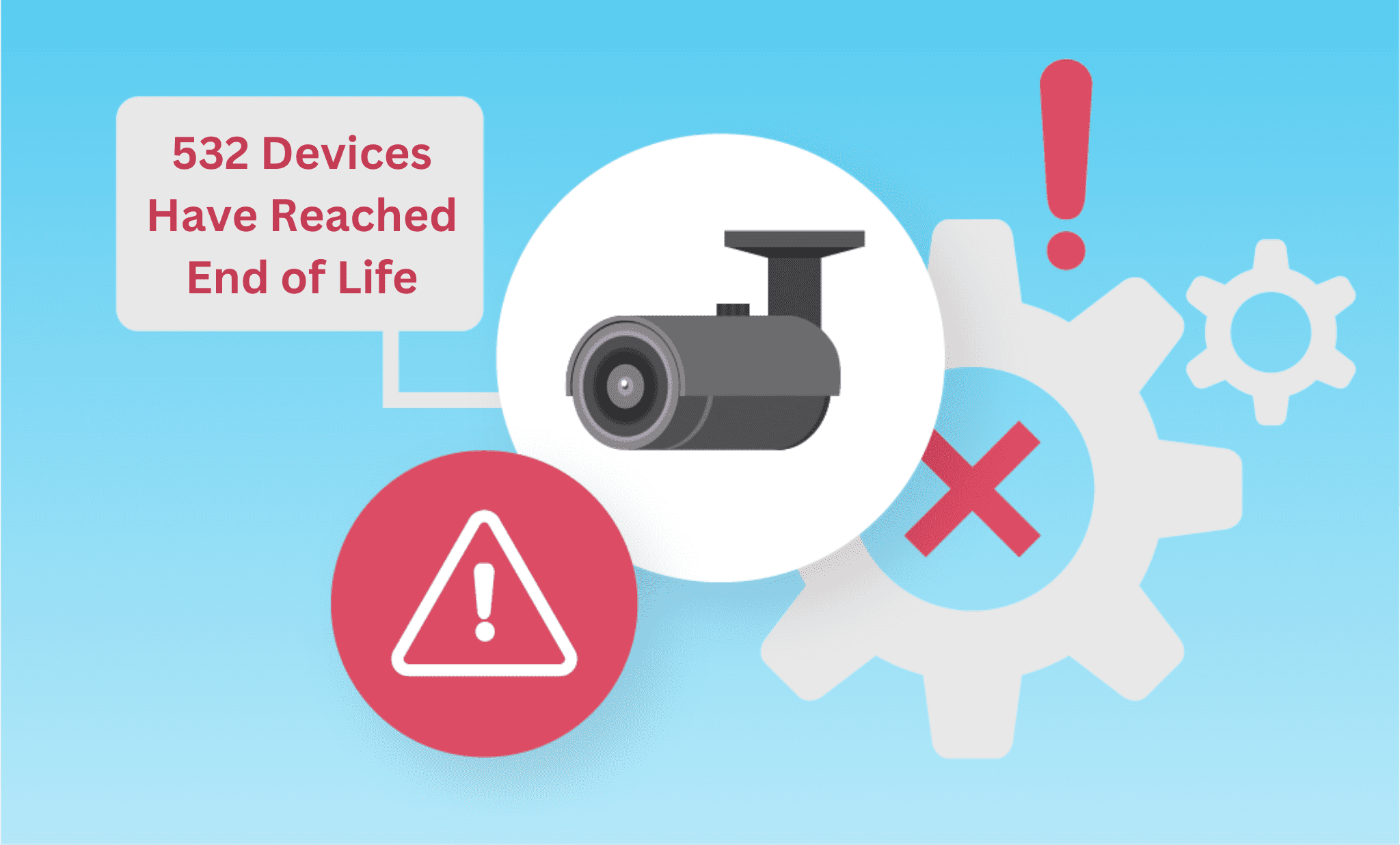Whether or not you use the term “ROI” (return on investment) in your physical security work, chances are that that idea is at the heart of the challenges you deal with. There are few issues that should keep physical security professionals up at night as much as the risk that an incident will take place while a connected camera or another device is not working properly. And while organizations know the risks that device downtime can present, they also realize the importance of keeping their security costs down. That makes it especially important to get the most “bang” for your physical security buck today.
But there’s an often-overlooked reason for both significant downtime and unnecessary expenses in the world of physical security: the inability and lack of planning to ensure that devices are replaced promptly whenever necessary.
That lack of planning is an expensive problem that can be overcome if you have both the right information and a proactive approach to using it. But because most organizations lack visibility into their physical security devices’ end of life, that end of life can result in significant physical security, cybersecurity, and financial risks.
Preventing that kind of scenario requires getting the right information at the right time, consistently and efficiently—in other words, getting the right information automatically.

What is at stake, and why is it so challenging?
Physical security organizations that don’t stay on top of your end-of-life planning expose themselves to three main risks:
- Using devices that are no longer supported by their manufacturers
- Having gaps in coverage before replacing old devices
- Struggling to find the budget to replace all obsolete devices
Using unsupported devices
Once a device becomes outdated, it’s important for you to promptly retire it. A device that has passed its end of service (which comes after its official end of life) will no longer receive any support from its manufacturer. That means no more patches will be made available if device vulnerabilities are discovered. Not only can this make the device operationally unreliable (presenting a physical security risk), but it can leave the device exposed to cybersecurity risks—turning it into a potential vector for a data breach.
Gaps in coverage
Failing to plan ahead for your devices’ end of life can also compromise the continuity of your coverage. It takes time to purchase and install these devices, and without adequate advance notice, you could be left with no good choice but to rely for a period of time on a device that should have already been retired. And since devices that are no longer supported cannot depend on new patches to address issues that arise, they could be susceptible to issues resulting in downtime—potentially leaving a hole in your physical security system that can only be fixed when you finally replace your outdated devices.
Struggling to find the budget
No less importantly, being able to promptly replace your physical security devices requires proactive budgeting. Although replacing a few devices may not break the bank, not knowing the end-of-life dates for an entire fleet of physical security devices can create a risk of needing to replace huge numbers of them at one time. Not only can this put you in danger of overpaying on new devices out of desperation to replace your old devices rapidly, but a lack of advance budgeting could actually hinder your ability to replace devices as needed.
How can automation and a proactive approach help you avoid these risks?
By proactively preparing to replace your physical security devices when necessary, you can ensure a smooth, reliable, and cost-effective transition from an old device to a new one. By promptly retiring outdated devices, you can steer clear of the operational and cybersecurity risks that come with using devices that are no longer supported. With the visibility gained from automation you’re able to plan (and stick to) a calendar for buying and installing new devices, thereby preventing the risk of a gap in coverage. And by building replacement devices into your budget as much as three to five years ahead of time, you can make sure that you have the resources to buy and install these devices—while also avoiding a frenzied and excessively costly shopping spree for new devices.
To take this kind of proactive approach, you need advance notice of each device’s end of life. Getting that knowledge ahead of time is especially challenging because it’s common to buy physical security devices without knowing when their end of life will come. It’s up to the manufacturer to determine the device’s end of life, and they can change their minds if they choose. Given the massive scale of many organizations’ fleets of physical security devices—with different types of devices, different manufacturers, different models, and different purchase and installation dates in play—that reality can make it practically impossible to keep track of all of their expiration dates manually.
That’s why an automated solution can make all the difference when it comes to navigating the end of life of physical security devices. By automatically getting notified well in advance, you can get the information you need in order to plan ahead, budget accordingly, and make sure that your replacement devices are purchased and installed promptly (and at a reasonable price).
For more on how an automated approach to the operational management of your physical security devices can help you to optimize your physical security posture while keeping costs down, check out The Cost Benefit of Automation in Physical Security.




